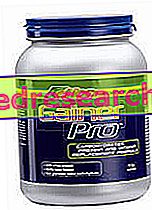Let us now analyze the ways in which environmental pollutants can reach the human body through the food chain.
WHAT IS BIOACCUMULATION? Bioaccumulation means the accumulation of xenobiotics, including their lipophilic metabolites, which can be found in the food chain. These substances can be deposited in the adipose tissue and in the central nervous system (CNS).
FOOD CHAIN, WHAT IS IT ? The food chain means a passage of toxic substances from one food compartment to another, up to the man.
Let's look at an example to better understand the concept of the food chain.
A fish lives in the waters of a river polluted by toxic substances. These toxic substances contaminate the aquatic vegetation, consequently also the fish. The latter are caught and eaten by humans.

The xenobiotic can have different characteristics that make it more resistant to thermal degradation, easily dispersed, stable to electromagnetic radiation, not very soluble and resistant to biological and chemical degradation. Thanks to these characteristics the xenobiotic remains for a long time in the environment causing problems to the ecosystem.
The main xenobiotics are:
- Pesticides;
- drugs;
- Heavy metals (Lead, Mercury, Methylmercury, Cadmium);
- Synthetic chemicals (polychlorinated biphenyls or PCBs)
- Radionuclides.
Cadmium is a very dangerous heavy metal, as it has marked carcinogenic properties. It comes from a by-product of Zinc and Lead extraction, but is also found in cigarettes, paints, plastics and marine waters. Since cadmium accumulates mainly at the level of the kidneys, skeleton and lungs its effects are serious damage to the DNA (it inhibits the processes of DNA correction, therefore it favors the development of neoplasms), to the renal apparatus, to the apparatus male reproductive and respiratory system. In the food chain, cadmium is contained in abundance in mussels, oysters, clams and in all those molluscs that filter sea water.
In addition to cadmium, a very dangerous heavy metal is mercury (Hg), especially if methylated. Methylmercury is much more dangerous than elementary mercury because it has the characteristic of being more lipophilic, therefore easily absorbed by our body. Methylmercury causes serious damage to the neuronal system, particularly in growing children (breastfeeding) and in the fetus. In the central nervous system methylated mercury goes to bind to the SH groups of cytoskeletal proteins causing an abnormal neuronal network, thus a deficit in nerve transmission.
Among the synthetic chemical substances we find very dangerous compounds, which have as their final target not humans but seabird species, murie. The dangerous substances in question are polychlorinated biphenyls or PCBs . This environmental disaster occurred in the late 1960s in Ireland, with the establishment of numerous industries. PCBs are organic compounds that can have a different degree of chlorination, as they can bind to multiple chlorine atoms. These compounds were used for industrial purposes because they were very stable to heat and were not flammable. Over time it became clear that PCBs caused numerous problems in the liver and kidneys. To overcome this huge problem it was decided to abolish the production of these dangerous substances. However the problem was not solved, because these substances had by now accumulated in marine sediments, in aquatic vegetation, consequently also in fish. All the birds that ate contaminated fish went to death. Taking up fragments of hepatic and renal tissue from dead birds, a very high concentration, up to 60000 ppm, of PCB was found.
If these xenobiotics through the food chain and come into contact with the human body in a state of pregnancy, the toxic substance passes to the level of the fetus, causing serious health problems both to the mother, but especially to the fetus. After birth the xenobiotic can be transferred from the nurse to the newborn through breastfeeding.
The effects that xenobiotics can have on newborns depend on:
- dose;
- amount of xenobiotic;
- binding of xenobiotic to plasma proteins;
- molecular weight;
- solubility (the more the xenobiotic is fat-soluble the more it passes into breast milk);
- degree of ionization;
- pH difference between maternal blood - milk.



